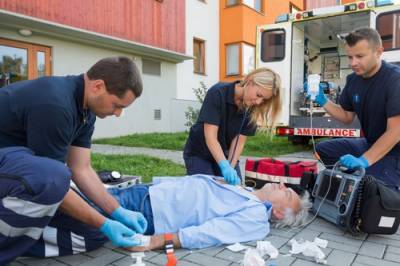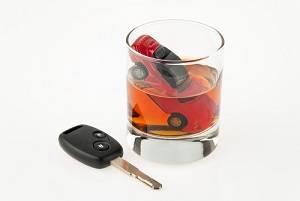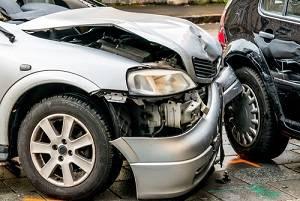
 When an accident occurs on public property, it can be very difficult to obtain compensation from any government agency. This is due, in large part, to laws which limit an injured party’s ability to sue a government entity or employee in most cases. The law, however, does not offer immunity in every situation. For example, a recent ruling by an Illinois appeals court has opened the door for further action by a bicycle rider who was injured while riding on Chicago’s Lakefront Trail.
When an accident occurs on public property, it can be very difficult to obtain compensation from any government agency. This is due, in large part, to laws which limit an injured party’s ability to sue a government entity or employee in most cases. The law, however, does not offer immunity in every situation. For example, a recent ruling by an Illinois appeals court has opened the door for further action by a bicycle rider who was injured while riding on Chicago’s Lakefront Trail.
Governmental Immunity Laws
In Illinois, the Local Government and Government Employees Tort Immunity Act (the Act), affords protection to municipal governments, agencies, and their employees in most personal injury cases. It specifically provides immunity for injuries caused by conditions of public recreation areas unless a local entity or employee is guilty of willful or wanton conduct that caused the injuries. The Act also provides absolute immunity for injuries that occur on access roads to “fishing, hunting, or primitive camping, recreation, or scenic areas.”
 When you have been injured in a motor vehicle accident that you believe was the result of another party’s actions or negligence, you have the right to seek compensation from the at-fault party. If the matter cannot be resolved through negotiation and compromise, filing a lawsuit may be the next logical step. Where you choose to file your action is an important decision, as the forum you select must have jurisdiction over the parties involved. This was recently called into question in a lawsuit stemming from a headline-grabbing accident from 2014 involving an automobile and interstate bus en route from Atlanta to Chicago.
When you have been injured in a motor vehicle accident that you believe was the result of another party’s actions or negligence, you have the right to seek compensation from the at-fault party. If the matter cannot be resolved through negotiation and compromise, filing a lawsuit may be the next logical step. Where you choose to file your action is an important decision, as the forum you select must have jurisdiction over the parties involved. This was recently called into question in a lawsuit stemming from a headline-grabbing accident from 2014 involving an automobile and interstate bus en route from Atlanta to Chicago.
The Accident
In October 2014, a double-decker Megabus was traveling on Interstate 65 near Greenwood, Indiana as it made its way to Chicago from Atlanta. A car on the same highway lost control and hit a barrier, causing the car to become disabled on the roadway. The Megabus hit the car, and the driver overcorrected, leading the bus flipping on its side, court documents indicate. The crash injured a number of passengers, 12 of whom filed lawsuits against the bus company alleging driver negligence.
 No one should be above the law. Yet, in the minds of some, this is exactly what a group representing firefighters and municipalities are trying to accomplish by introducing a bill that would reinstate the so-called “public duty rule.” The law, which dates back to the 1800s, broadly protected paramedics and firefighters from lawsuits while on the job, even when those actions stemmed from willful or wanton negligence. Essentially, no form of conduct – even conduct that intentionally or recklessly endangered the public – was considered reprehensible under the law.
No one should be above the law. Yet, in the minds of some, this is exactly what a group representing firefighters and municipalities are trying to accomplish by introducing a bill that would reinstate the so-called “public duty rule.” The law, which dates back to the 1800s, broadly protected paramedics and firefighters from lawsuits while on the job, even when those actions stemmed from willful or wanton negligence. Essentially, no form of conduct – even conduct that intentionally or recklessly endangered the public – was considered reprehensible under the law.
Public Duty Rule Unnecessary and Unlawful
Under any other circumstance, the public has the right to expect that they will be protected from harm or injury caused by negligence, recklessness, or maliciousness. Drunk drivers receive criminal penalties and may be taken to court for damages. Negligent physicians, nurses, anesthesiologists, and hospitals may be subject to malpractice lawsuits and, in some circumstances, could lose their license to practice medicine. Even business owners are expected to provide reasonable protections to their patrons; failure to do so makes them subject to a premises liability lawsuit.
 As winter officially begins and drivers head out and about to visit family and celebrate the holidays, it becomes important for everyone to understand how to stay safe on the roads. Even more critical is the knowledge of what to do, should an automobile accident happen to you or someone you love. Winter weather safety should be the responsibility of every driver and passenger on the road.
As winter officially begins and drivers head out and about to visit family and celebrate the holidays, it becomes important for everyone to understand how to stay safe on the roads. Even more critical is the knowledge of what to do, should an automobile accident happen to you or someone you love. Winter weather safety should be the responsibility of every driver and passenger on the road.
An Ounce of Prevention Can Go a Long Way
Ensuring your vehicle is “winter ready” can help dramatically when it comes to keeping you, your family, and others safe on Illinois roadways. New wipers keep your windshield clear, improving your overall visibility. Snow tires that have been checked for proper air pressure help to ensure you have good traction while driving through snow and slush. Good brakes can give you improved stopping power, even in the worst of conditions. So, if you have not yet had your vehicle winterized, either take steps to do it yourself or contact your local mechanic for assistance. Also note that a winter weather emergency pack should be a part of your winterization steps. A flashlight, warm blankets and clothes, ice scrapers, kitty litter, a phone charger, water, and non-perishable foods are just a few thing you might want to include.
 A slip and fall can happen to almost anyone, almost anywhere, especially during the winter months. Yet, there are some Americans who are at a higher risk of serious injury than others. Of particular concern are those who are over the age of 65. Even more concerning for this at-risk group is the fact that they are also more likely to suffer a slip and fall injury. Learn more about this risk, and what you can do if you or someone you love has suffered a slip and fall injury in Illinois.
A slip and fall can happen to almost anyone, almost anywhere, especially during the winter months. Yet, there are some Americans who are at a higher risk of serious injury than others. Of particular concern are those who are over the age of 65. Even more concerning for this at-risk group is the fact that they are also more likely to suffer a slip and fall injury. Learn more about this risk, and what you can do if you or someone you love has suffered a slip and fall injury in Illinois.
Slip and Fall Injuries and Deaths More Common Among Older Americans
Information from the Centers for Disease Control and Prevention (CDC) indicates more than 2.8 million older Americans experience a slip and fall each year. More than 27,000 of those falls resulted in death. Many others (one in five) resulted in serious injury, such as broken bones, facial fractures, and traumatic brain injury. Further, more than 800,000 older Americans are hospitalized due to head injuries, hip fractures, spinal cord injuries, and other serious slip and fall injuries.
 Being in a car accident with a drunk driver can be traumatic and can leave you with a variety of serious injuries. You may not know what to do in order to be compensated for the damage to your vehicle and the injuries you and your loved ones may have sustained.
Being in a car accident with a drunk driver can be traumatic and can leave you with a variety of serious injuries. You may not know what to do in order to be compensated for the damage to your vehicle and the injuries you and your loved ones may have sustained.
The first thing you should understand is that a car accident caused by a drunk driver is no ordinary car accident. Under Illinois law, there are several differences. If you have been in such an accident, it is recommended that you meet with an experienced drunk driving accident attorney who understands the damages you may be eligible for and the parties who may be responsible.
Illinois Drunk Driving Laws
Drivers may not drive with a BAC level of .08% or higher. If the driver is under 21 years-old, a driver cannot drive legally if his or her BAC level is .01% or higher. Illinois law also bans carrying alcohol in open containers in cars.
 Anyone who has been hospitalized understands the longing for home. Hospitals are renowned for the unusual smells, sometimes questionable food, poor sleeping patterns, cranky roommates, and mediocre room service. After even a short stay in a hospital bed, many are quick to start questioning how quickly they can expect to return home. Under the care of an upstanding medical professional, you will likely be advised to stay until you become healthy enough for an unsupervised, non-controlled environment. However, early hospital discharge is a growing epidemic that is putting patients’ lives in danger and creating the possibility of medical malpractice suits.
Anyone who has been hospitalized understands the longing for home. Hospitals are renowned for the unusual smells, sometimes questionable food, poor sleeping patterns, cranky roommates, and mediocre room service. After even a short stay in a hospital bed, many are quick to start questioning how quickly they can expect to return home. Under the care of an upstanding medical professional, you will likely be advised to stay until you become healthy enough for an unsupervised, non-controlled environment. However, early hospital discharge is a growing epidemic that is putting patients’ lives in danger and creating the possibility of medical malpractice suits.
When to Go Home
Determining when a patient should be sent home can be a difficult decision. However, that is up to the doctor and the patient to decide together. The patient knows their body better than anyone while a physician can determine what symptoms and conditions should be monitored. Working together, they put together a comprehensive picture of the situation. The patient may be ready to go home if:
 The winter holiday season is fast approaching. This is a time when millions of Americans are expected to travel to various destinations. A significant portion of the population finds traveling by personal vehicle the most beneficial to their situation. In previous years, AAA estimated that 98.4 million drivers were on the road throughout the end of the year holidays, traveling over 50 miles each direction. The staggering number of vehicles on the road is not only impressive, but it also increases the likelihood of motor vehicle accidents due to negligent drivers.
The winter holiday season is fast approaching. This is a time when millions of Americans are expected to travel to various destinations. A significant portion of the population finds traveling by personal vehicle the most beneficial to their situation. In previous years, AAA estimated that 98.4 million drivers were on the road throughout the end of the year holidays, traveling over 50 miles each direction. The staggering number of vehicles on the road is not only impressive, but it also increases the likelihood of motor vehicle accidents due to negligent drivers.
What Constitutes Negligence?
When another driver’s actions or inactions lead to an accident which causes injuries to you or your loved ones, you are entitled to collect compensation. A lapse in attention or judgment while behind the wheel by the other driver may constitute negligence, leaving him or her responsible for the subsequent damages. Negligent driving may include:
 An estimated 30 million Americans have experienced a loss of hearing. Another 22.5 million have suffered a loss in vision. Some of these cases are due to genetics, diseases, age, or other conditions that may be specific to the person. However, there are other instances in which the loss of sight or hearing was caused by the negligent actions of another. If you or someone you love has experienced visual or auditory losses and believe negligence may have been the cause, the following information can help you better understand your legal rights, including your right to pursue compensation.
An estimated 30 million Americans have experienced a loss of hearing. Another 22.5 million have suffered a loss in vision. Some of these cases are due to genetics, diseases, age, or other conditions that may be specific to the person. However, there are other instances in which the loss of sight or hearing was caused by the negligent actions of another. If you or someone you love has experienced visual or auditory losses and believe negligence may have been the cause, the following information can help you better understand your legal rights, including your right to pursue compensation.
Hearing Loss and Negligence
Loss of hearing, whether partial or complete, can greatly change the way a person interacts and communicates with the world around them. For example, if someone experiences a partial loss of hearing, they may be less apt to hear a noise that might indicate a potential danger (i.e. an approaching car, etc.). If they suffer from complete loss of hearing, they may need to learn a whole new way to communicate, such as learning sign language and/or learning how to read lips.
 When you have been hurt on the job, your employer’s workers’ compensation insurance coverage should be available to offer you the benefits you need to recover quickly and get back to work. A work-related injury can be painful, of course, but it should not leave you struggling financially. It should be relatively easy to obtain coverage for medical treatment, rehabilitation, and even lost wages while you heal. According to Illinois Governor Bruce Rauner, however, it may be too easy to get workers’ compensation benefits, and he wants something done to fix the problem.
When you have been hurt on the job, your employer’s workers’ compensation insurance coverage should be available to offer you the benefits you need to recover quickly and get back to work. A work-related injury can be painful, of course, but it should not leave you struggling financially. It should be relatively easy to obtain coverage for medical treatment, rehabilitation, and even lost wages while you heal. According to Illinois Governor Bruce Rauner, however, it may be too easy to get workers’ compensation benefits, and he wants something done to fix the problem.
Coverage for a Workplace Injury
The Illinois Workers’ Compensation Act provides that any injury that arises out of and in the course of the injured party’s employment is intended to be compensable under the law. It is up to the injured employee to prove by a preponderance of the evidence that his or her injuries were related to employment. As far back as 2012—before Governor Rauner was even elected—state officials observed that courts in Illinois, as well as the Illinois Workers’ Compensation Commission (IWCC), have traditionally used very broad interpretations of the law to allow injured parties to collect benefits.